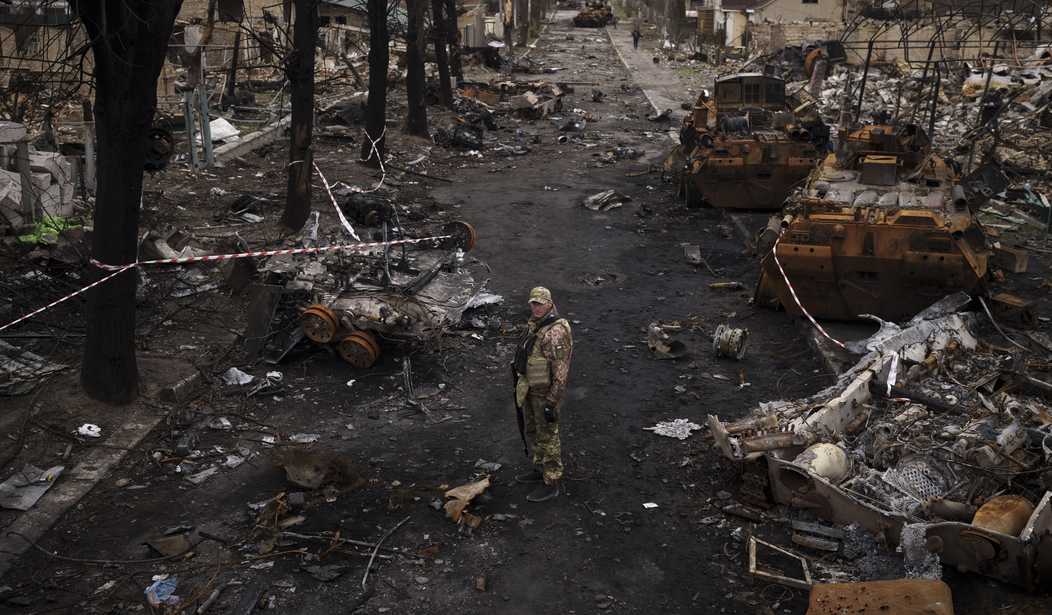Wars never go as planned.
The latest expert on that is Russia’s Vladimir Putin, who just got news direct from the prime minister himself that Finland on his western border has decided to join NATO asap. With historically neutral Sweden soon to follow.
The former KGB colonel and frequent president is a Soviet-era kind of guy. He was certain that his unprovoked invasion forces would easily slice through Ukraine’s undersized, third-rate military. He knew that the Texas-sized neighbor would cave within days under the amateur leadership of a former TV comedian for Vlad’s sake.
Then, the Russian could promptly install a puppet regime as part of his legacy to recreate a greater Russia with a geographic buffer with the West, while showing the world Russian might and the weak West’s lack of will.
Putin also knew NATO was an aging alliance divided by competing economic interests and weakened by its growing dependence on Russian energy that Putin had planned. And chastened by its recently-collapsed 20-year adventure in Afghanistan.
Wrong, Bucko. Very wrong.
While more than four million Ukrainians, mainly women and children, have fled the country and thousands have died in indiscriminate shelling and bombing, virtually everyone remaining has joined the Resistance.
Fighting for their very own national survival against ill-prepared, misinformed invaders, Ukraine has resisted valiantly and cleverly, even launching guerrilla raids back inside Russia.
Snipers have picked off more than a dozen senior Russian officers desperately trying to rally stalled battle groups at the front. Nearly 1,000 Russian tanks and armored vehicles inching down the road like inviting targets now litter roadsides as blackened hulks.
Russian forces had to break off their stalled assault on the capital of Kyiv, and now their troops have retreated in eastern Ukraine from around the second city, Kharkiv.
Is it possible an ill Putin could simply declare victory by holding eastern Ukraine and go home? That might seem out of character. But the Soviets were more realistic about their military outlook against Afghan’s mujahideen, breaking off that invasion in 1989 after 10 years, when NATO continued its vain engagement for 20.
When Putin annexed Crimea in 2014, Barack Obama supported Ukraine with tepid sanctions, field rations, and blankets.
Today is so much different. Instead of being hesitantly divided, NATO’s members continue to apply stringent sanctions while flooding Ukraine with billions of dollars worth of heavy equipment and munitions, including a deadly modern anti-tank missile now dubbed Saint Javelin.
They’ve shut down Putin’s new undersea gas pipeline, and are scaling energy purchases back to zero while giant corporations shutter major operations in Russia.
Last Thursday, the German industrial giant Siemens, one of Europe’s largest manufacturers with 3,000 employees in Russia, joined a growing number of Western businesses shutting down operations there.
It seems perhaps, hopefully, the 1938 lesson of allied appeasement of Hitler’s invasive expansions has stuck.
Russia’s last tsar was executed 104 years ago. But a suddenly frail-looking Putin, sitting under blankets to watch Moscow’s annual Victory Parade last week, has created his own royal mess.
Vladimir Putin covered his legs with a blanket during Russia’s Victory Day parade pic.twitter.com/z6TzNrsZKS
— Market Rebellion (@MarketRebels) May 11, 2022
This raises serious questions about his mental and physical health and political longevity in a ruling office that has not always experienced peaceful transitions of power.
Worst of all for the moment, long-time neutral Finland on Russia’s western border has just decided to join NATO. “Finland must apply for NATO membership without delay,” the country’s leadership announced. “We hope that the national steps still needed to make this decision will be taken rapidly within the next few days.”
Finland’s President Sauli Niinisto addressed Putin, “You caused this. Look in the mirror.”
Support for NATO membership in Finland, which has a significant military and has fought wars with Russia, has exploded since the Ukraine invasion, from less than a third to more than 70 percent now. A parliamentary vote could come this week.
At the same time, Sweden, which has been carefully neutral for 200 years, is poised to make a similar NATO announcement as a direct result of Putin’s aggression.
Last winter, Sweden’s prime minister ruled out NATO membership. “There is a before and after 24 February,” said Magdalena Andersson. “The security landscape has completely changed.” On Sunday, Sweden’s ruling party gave its green light to join NATO.
The alliance, formed in 1949 with 12 members including Norway, has indicated prompt acceptance of the moves, pending a vote of the existing 30 members.
NATO’s Secretary General Jens Stoltenberg, a Norwegian, said:
If they decide to apply, Finland and Sweden will be warmly welcomed, and I expect that process to go quickly.
But wait. Turkey’s president, Recep Erdogan, has indicated his possible veto of the required unanimous vote of North Atlantic Treaty Organization members.
Turkey, which is nearly 3,000 miles from the North Atlantic, seems an unlikely NATO member, but other members wanted long-term access to the Incirlik airbase there. Erdogan has been an alliance maverick before as a bargaining chip and he even purchased the new Russian air defense system.
You would think Putin’s persistent aggressions (Georgia 2008, Crimea 2014, Ukraine 2022) might prompt debates in some members about the likelihood of being drawn into war over Russia’s next-door neighbors far from them.
So far, no sign of that, the firm belief being that a unified alliance of NATO’s size would more than discourage such an assault despite the blustering and threats of a nuclear power like Moscow. And especially given Russia’s combat fumbling so far.
Expanding NATO to its newest member, North Macedonia, just two years ago did not raise such immediate questions.
This is a significant move that will immediately alter the defensive structure of Europe. Article 5 of NATO’s charter obligates all members to respond to any attack on others. It’s been used only once, to assist the U.S. 9/11 response in Afghanistan. But it’s not been tested in close proximity to members.
Sweden and Finland have been members of the European Union since 1995 and have participated in NATO exercises. Both already meet most NATO standards. Finland’s defense spending exceeds NATO’s target of two percent of GDP and Sweden’s is increasing. Since the invasion began, both countries have shared intelligence with NATO and attended meetings on Ukraine.
Just nine months ago, Joe Biden closed out involvement in America’s longest war (Afghanistan), a messy exit but an exit. He has sent more troops to Europe and dispatched or requested in excess of $33 billion in military aid (which the Democrat House boosted to $40 billion).
But Biden has resisted direct U.S. military involvement in Ukraine, a former Soviet Republic that shares a 1,300-mile border with Russia. Ukraine isn’t a NATO member but, despite Putin’s threats, was drifting in that direction before the Feb. 24 invasion.
Russia did invade Finland briefly in 1939. A repeat action across the 820-mile frontier from the Baltic to the Arctic would immediately involve all members, including the United States. Supply lines from the U.S. to Finland would be 4,300 miles, just 500 miles less than war supplies travel to Ukraine, both on Russia’s borders.
The lackluster performance of Russia’s invasion force results from poor logistics, intelligence, training, morale, tactics, and command structure. Other than that, Putin’s plans have gone well.
Russian communications and security have been so shoddy that Ukraine and other intelligence agencies have been able to pinpoint Russian targets of resources, generals, and ships for lethal attacks.
But it’s all of keen interest to Western intelligence and defense experts. After a Ukraine visit last month, Defense Sec. Lloyd Austin said candidly,
We want to see Russia weakened to the degree that it can’t do the kinds of things that it has done in invading Ukraine.
Moldova, which professes neutrality and is not in NATO or the EU, was thought to be a possible Putin target. And Putin spokesmen have also threatened Latvia and Estonia, which are both EU and NATO members.
To discourage Russian advances on them and other members, the United States has positioned 100,000 troops in Europe, the largest deployment there in 17 years.
Americans have growing and legitimate questions about the mental acuity of their elderly president. But now, similar concerns exist about the mental and physical state of Putin, who reportedly has blood cancer but launched such an ill-prepared military operation to almost universal condemnation beyond the reach of his security police.
The Russian turns 70 in October. Biden turns 80 six weeks later. Both men are fond of dogs. But the mental states of these two leaders make for a volatile combination and serious confrontation.













